Fireball FAQs
What is a fireball? What is the difference between a fireball and a bolide? How frequently do fireballs occur? Can…
What is a fireball? What is the difference between a fireball and a bolide? How frequently do fireballs occur? Can…
Each year since 2005, the American Meteor Society receives hundreds of fireball reports. Browse the articles below and take a…
A fireball is another term for a very bright meteor, generally brighter than magnitude -4, which is about the same…
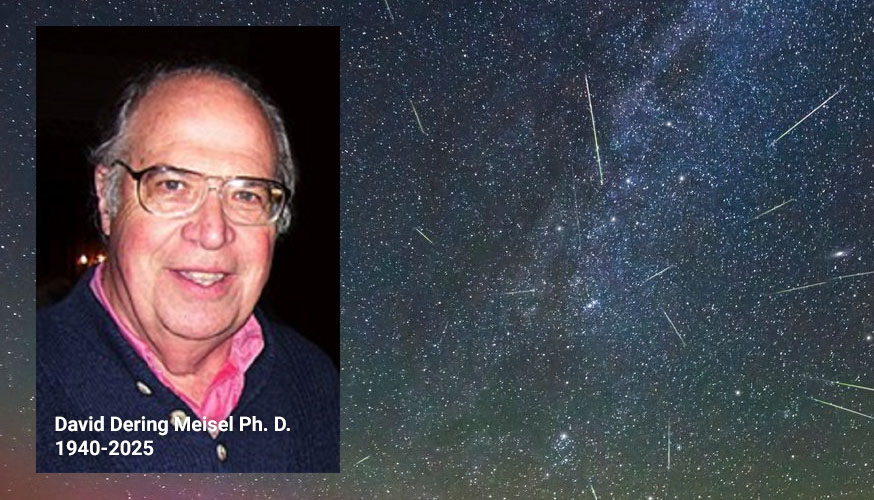
David Dering Meisel Ph. D. 1940-2025 The meteor astronomy community will be sad to learn that David Dering Meisel, Ph.D.,…

During this period the moon will reach its first quarter phase on Wednesday September 27th. At this time the moon will be located 90 degrees east of the sun and will set near 0100 local summer time (LST). This weekend the waxing crescent moon will set shortly after dusk, allowing meteor observers dark skies the remainder of the night.
Bob has been interested in the stars as far back as he can recall. His parents placed his crib next…
Richard Taibi My interest in space and astronomy was awakened by Sputnik’s launch in 1957. I was 11 then and…
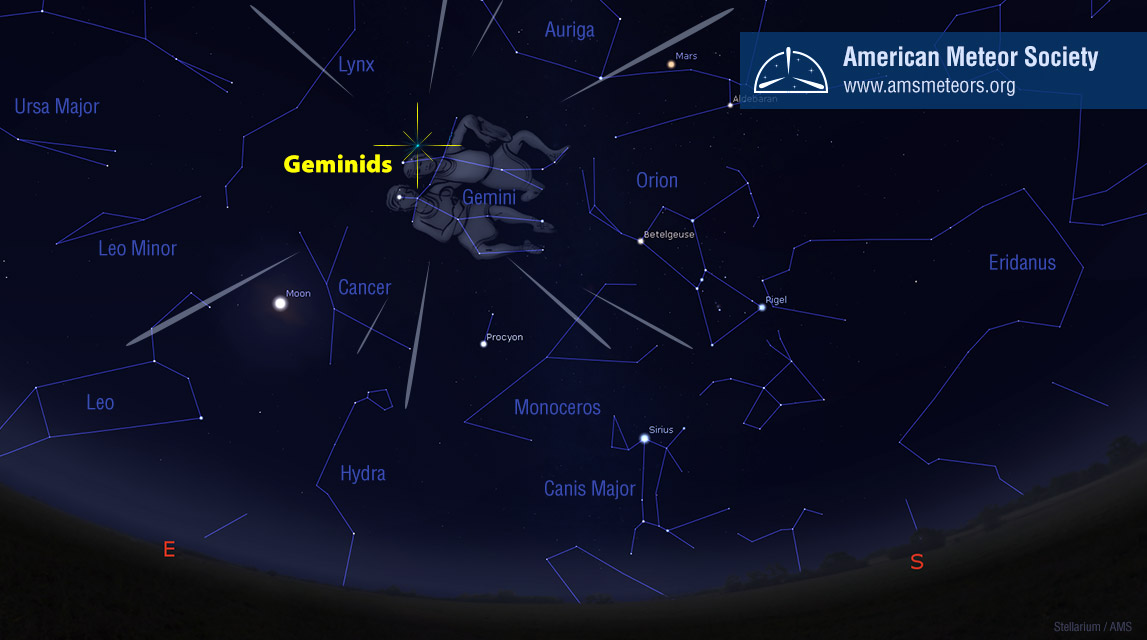
Position of the Geminids radiant on Dec 14th. North is up in this illustration The Geminids are active from November…
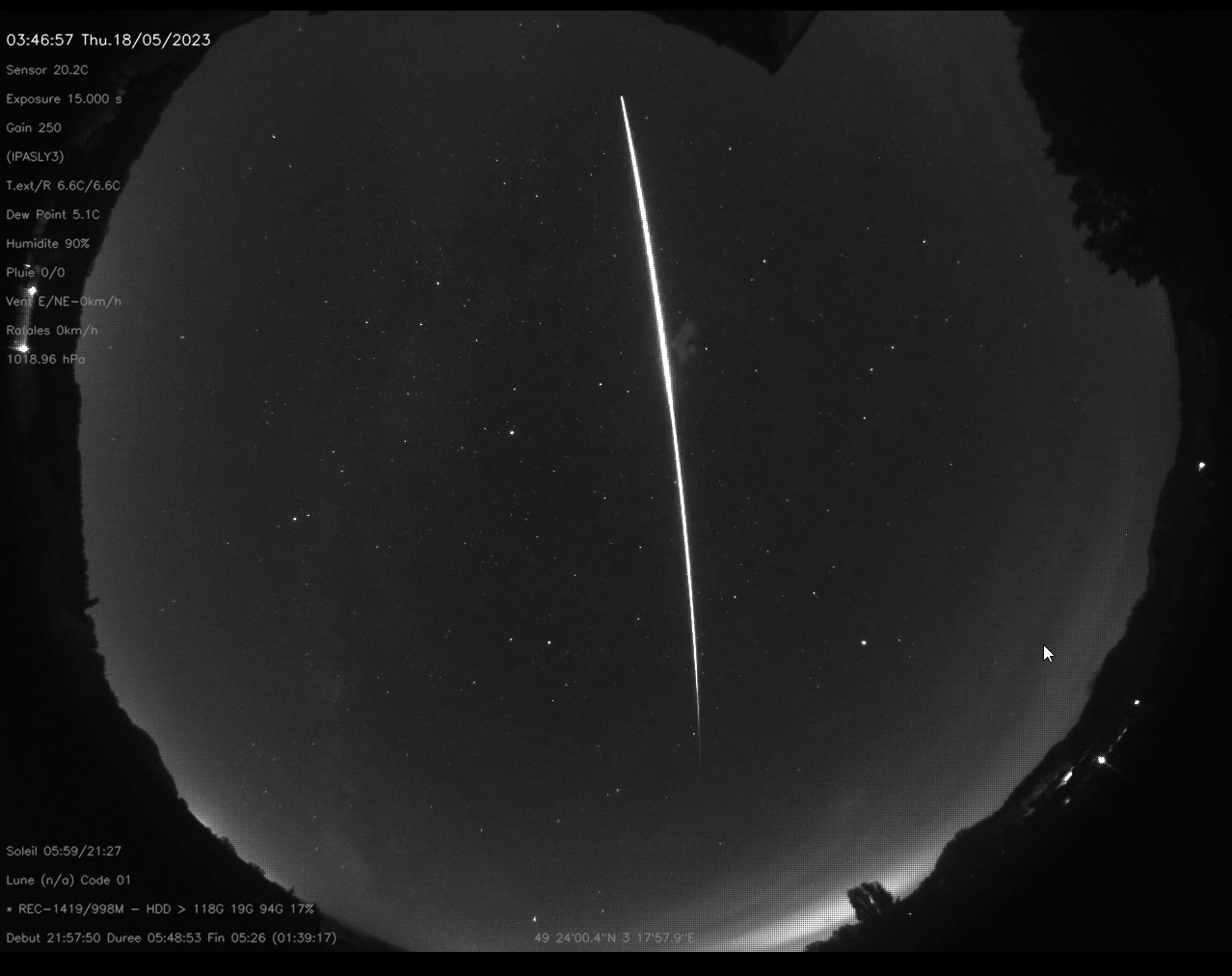
This very long fireball was captured by Roy Georges at 03:47 CEST (01:47 UT) on May 18, 2023, from Pasly, France.…
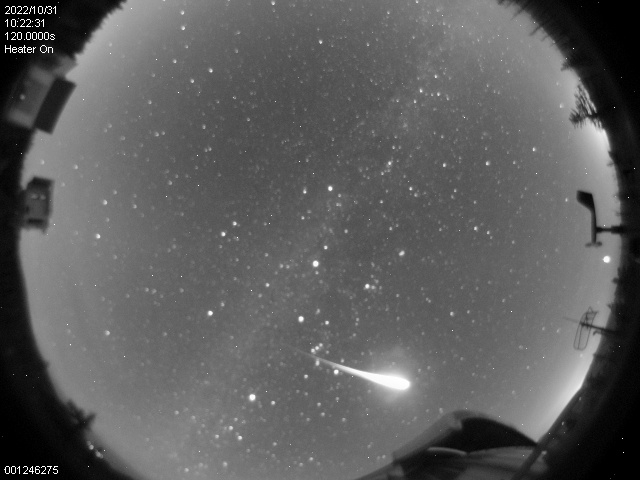
Steve Allanson captured this brilliant sporadic fireball using an all sky camera on October 31, 2022, at 03:23 MST (10:23…
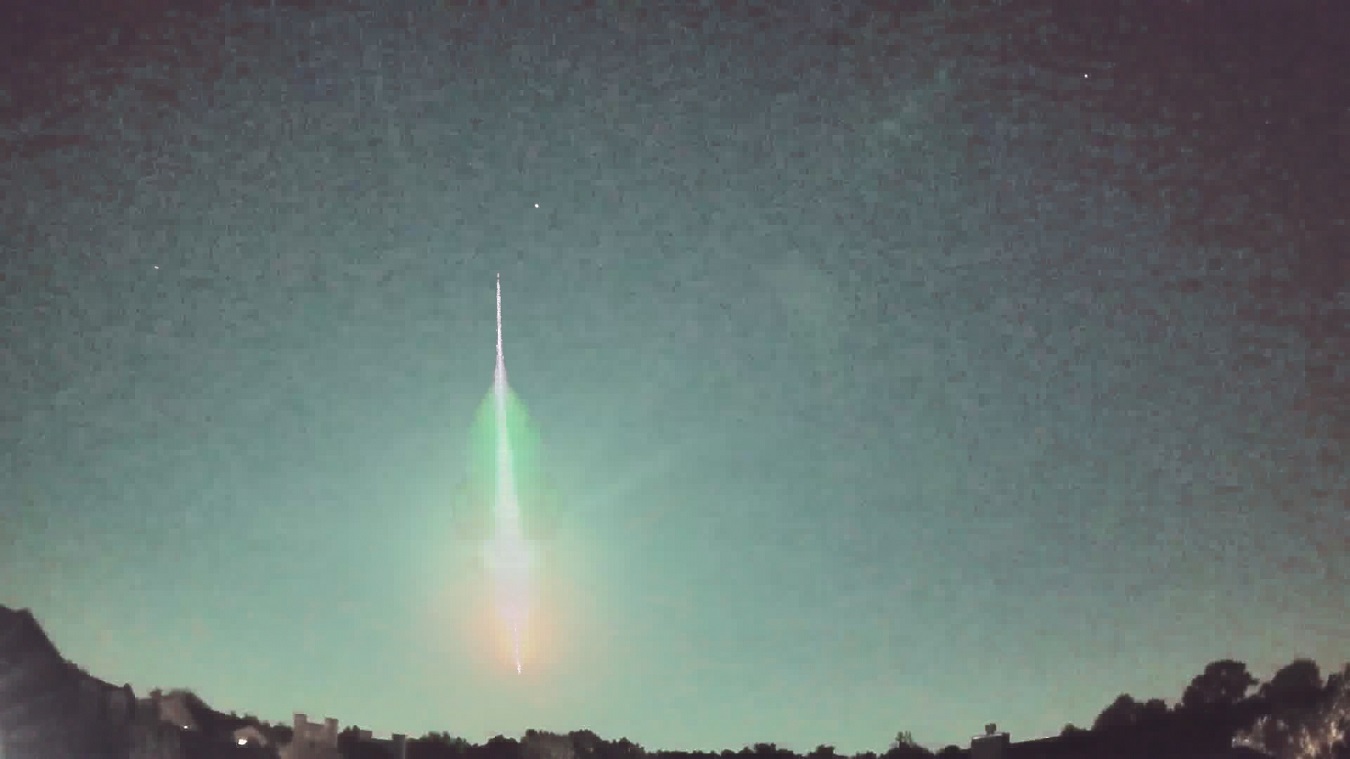
Ed Albin captured this incredibly bright fireball using his AllSky7 camera meteor video system on September 26, 2022, at 00:04…
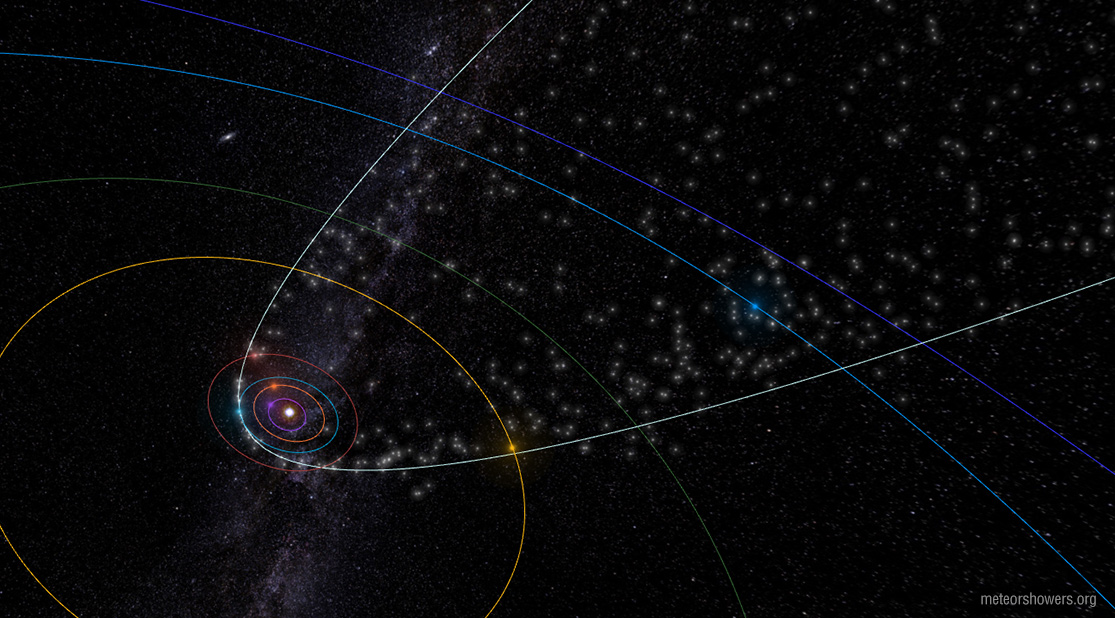
The Lyrids are particles shed from comet 1861 G1 Thatcher, which last passed through the inner solar system in 1861. Don’t expect this comet to return anytime soon as its orbit has been calculated to be near 415 years!
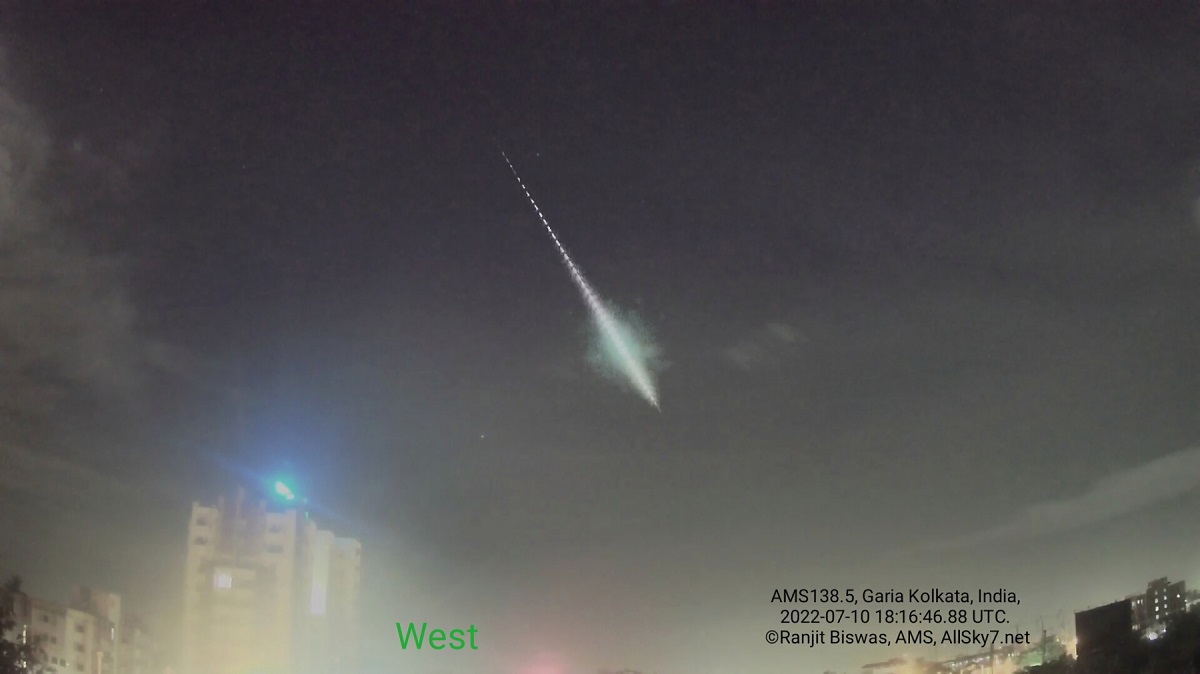
During this period, the moon reaches its full phase on Sunday October 9th. At that time the moon will lie opposite the sun and will lie above the horizon all night long. As the week progresses the waning gibbous moon will rise later each evening, allowing a window of opportunity to observe meteor activity in dark skies between dusk and moon rise.
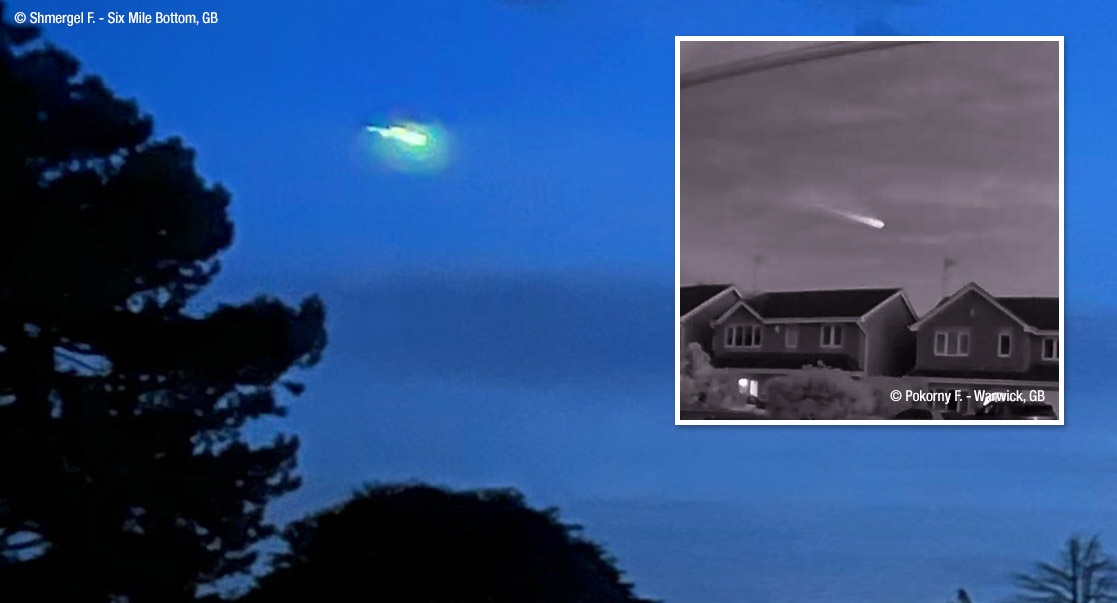
Only five days after a brilliant fireball startled observers in Great Britain, another fireball has occurred with a very similar trajectory to the previous event.

Daniel Bush captured this extremely bright fireball at 4:43 CST (10:43 UT) on January 2, 2022, from Albany, Missouri, USA.…
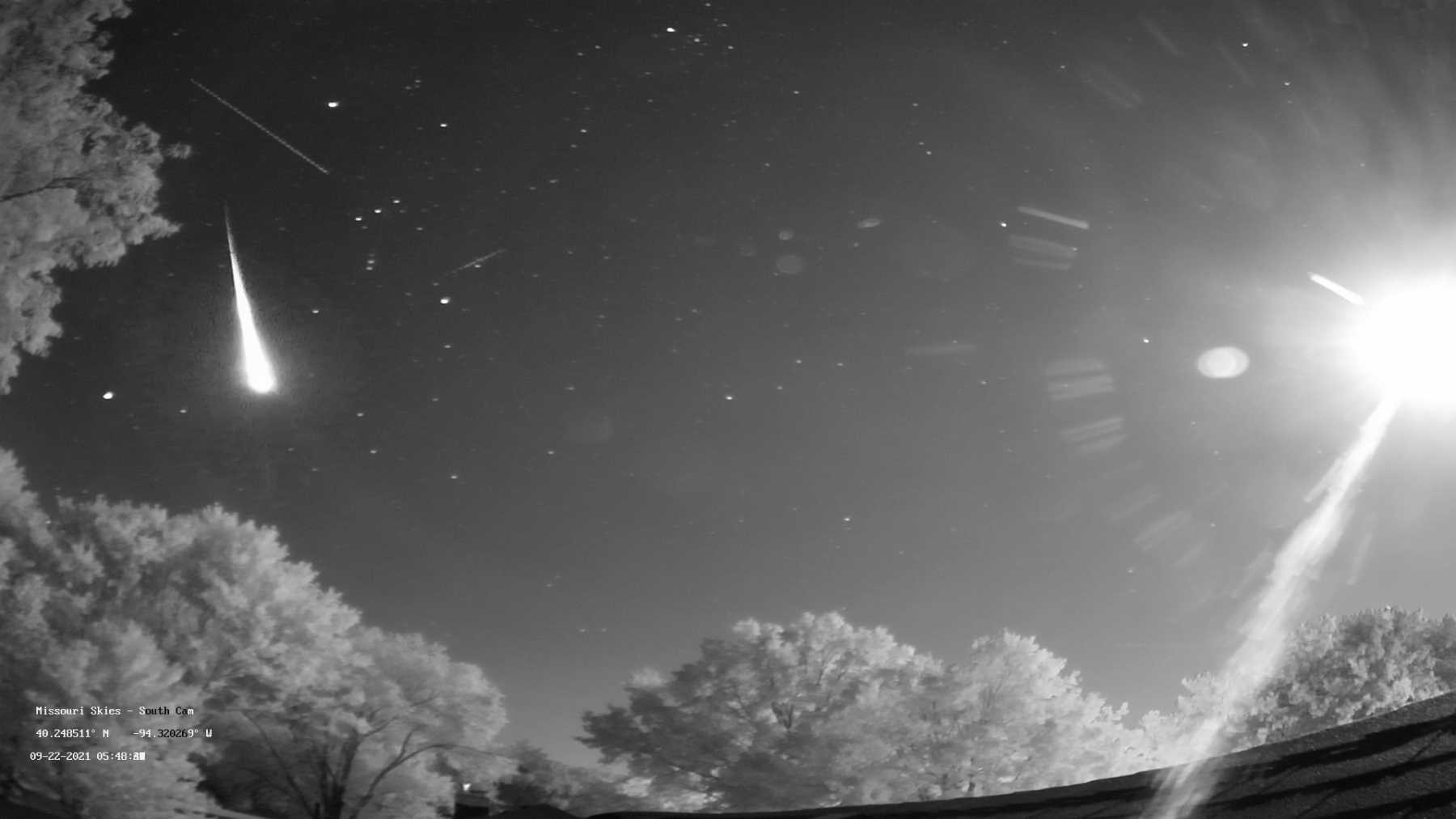
During this period, the moon reaches its new phase on Saturday December 4. At that time the moon lies near the sun and is invisible at night. As the week progresses the waxing crescent moon will enter the evening sky but will set before the more active morning hours arrive.
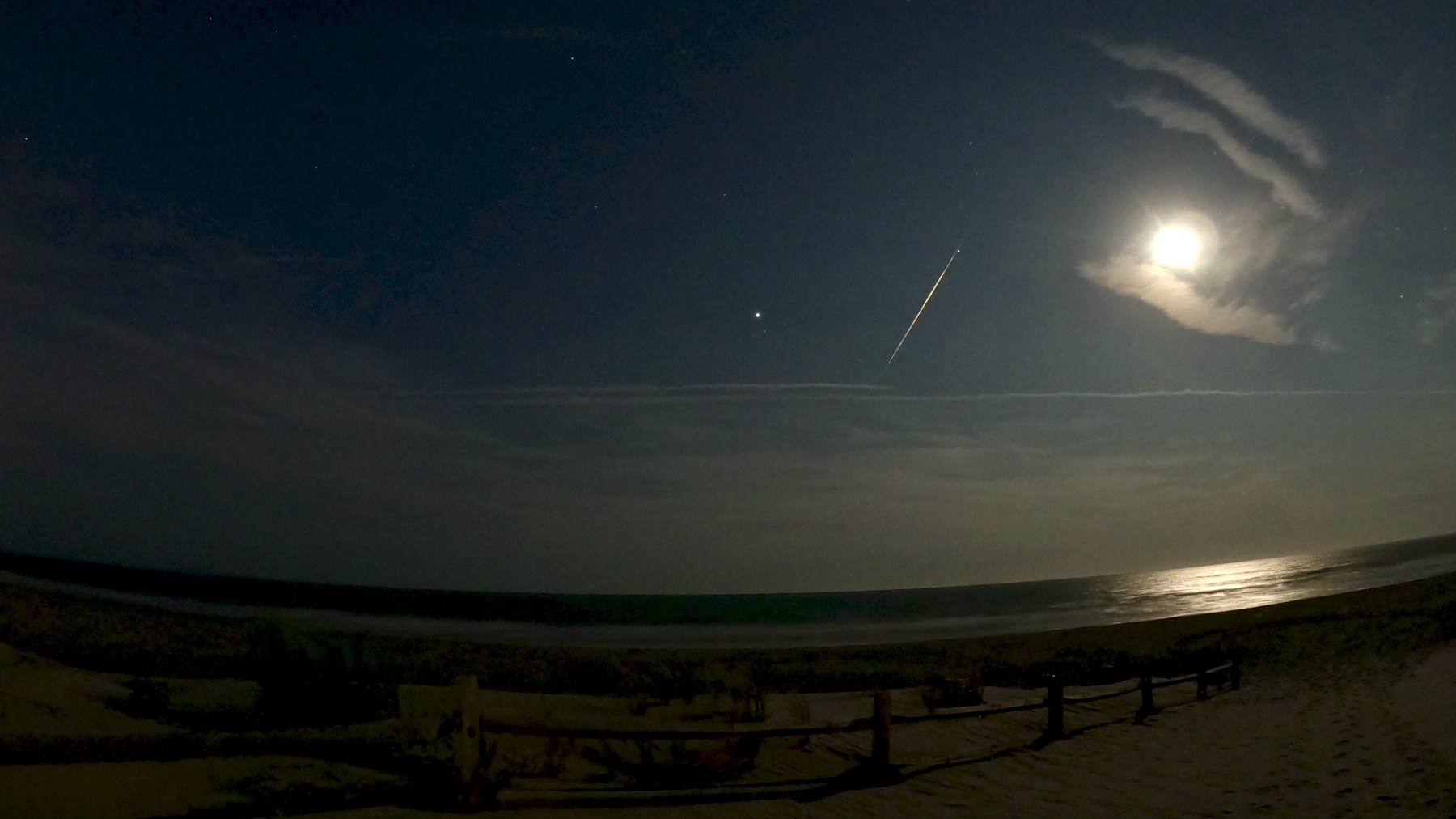
During this period, the moon reaches its last quarter phase on Saturday November 27. At that time the moon will rise near 23:00 (on Nov. 26). This weekend the morning sky will be bathed in moonlight from the half-illuminated moon. If your sky is transparent, successful meteor observations can be undertaken under such circumstances. It helps to face a direction opposite the moonlight in order to sustain your night vision. As the week progresses the moon becomes less of a nuisance as its phase wanes, and it rises later in the morning with each passing night.

This long fireball was captured by Han Wang at 14:41 UT (22:41 CST) on June 12, 2021, from Chengde, China. Han…
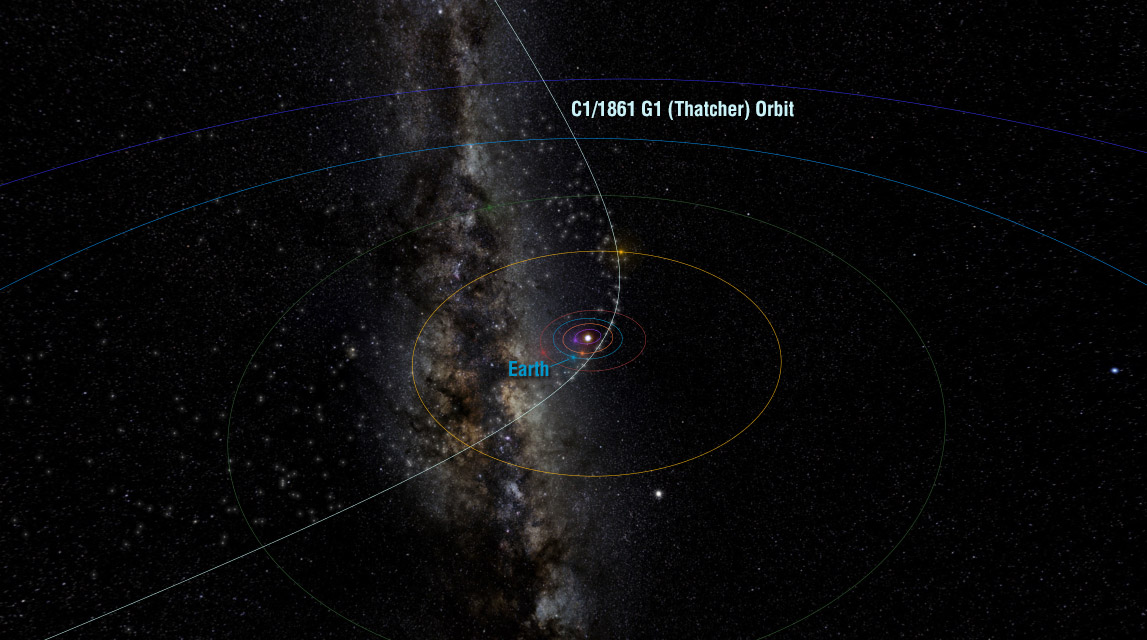
The normal Lyrid display, seen under moonless conditions, usually offers a peak of around 10 meteors per hour in addition to the normal random meteor rate of about 5 per hour.
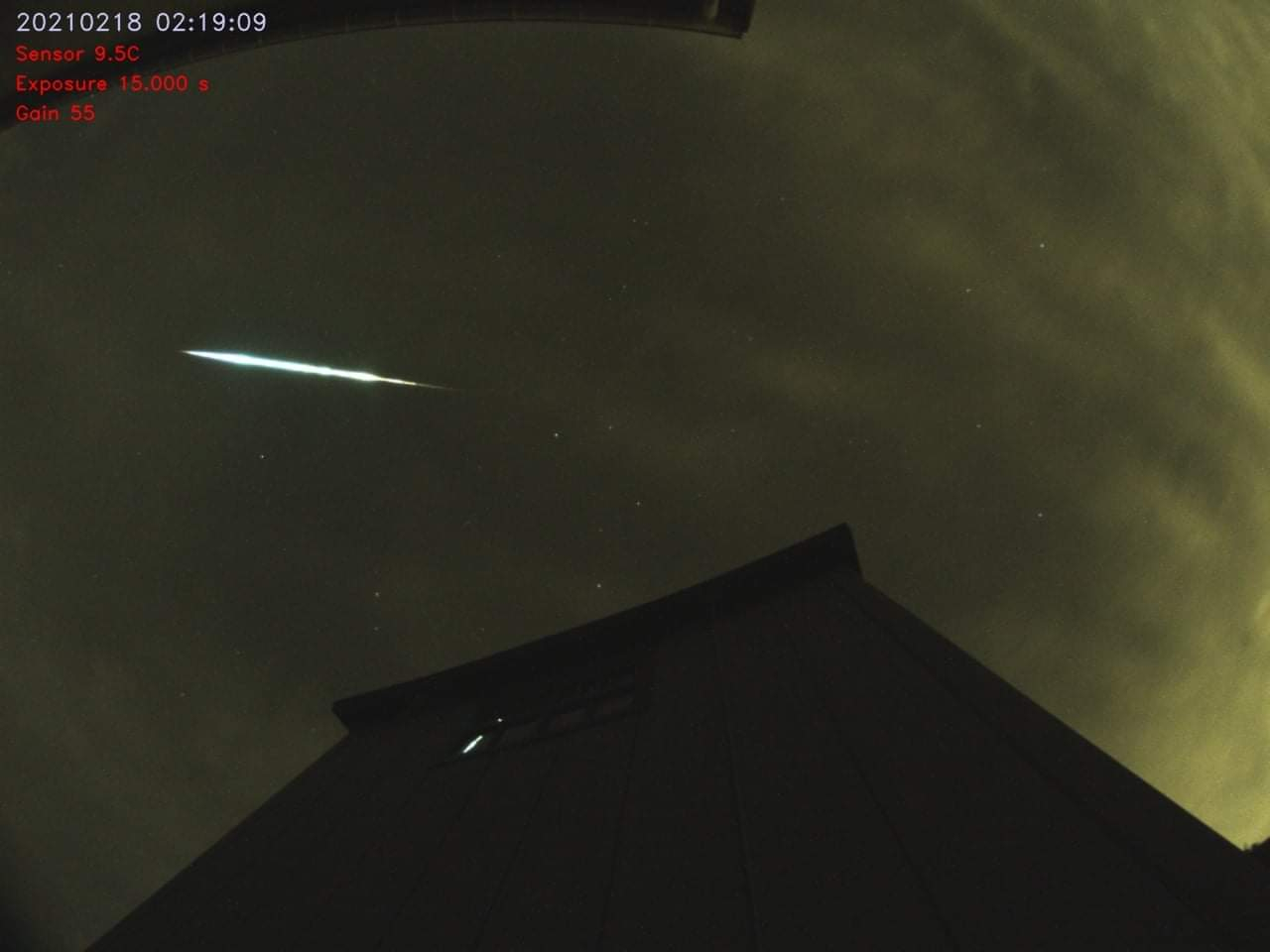
During this period the moon reaches its last quarter phase on Sunday April 4th. On this date the moon is located 90 degrees west of the sun and rises near 3:00 local daylight saving time (LDST). As the week progresses the moon will rise later each night, providing a growing window of opportunity to view under dark skies between dusk and moonrise.
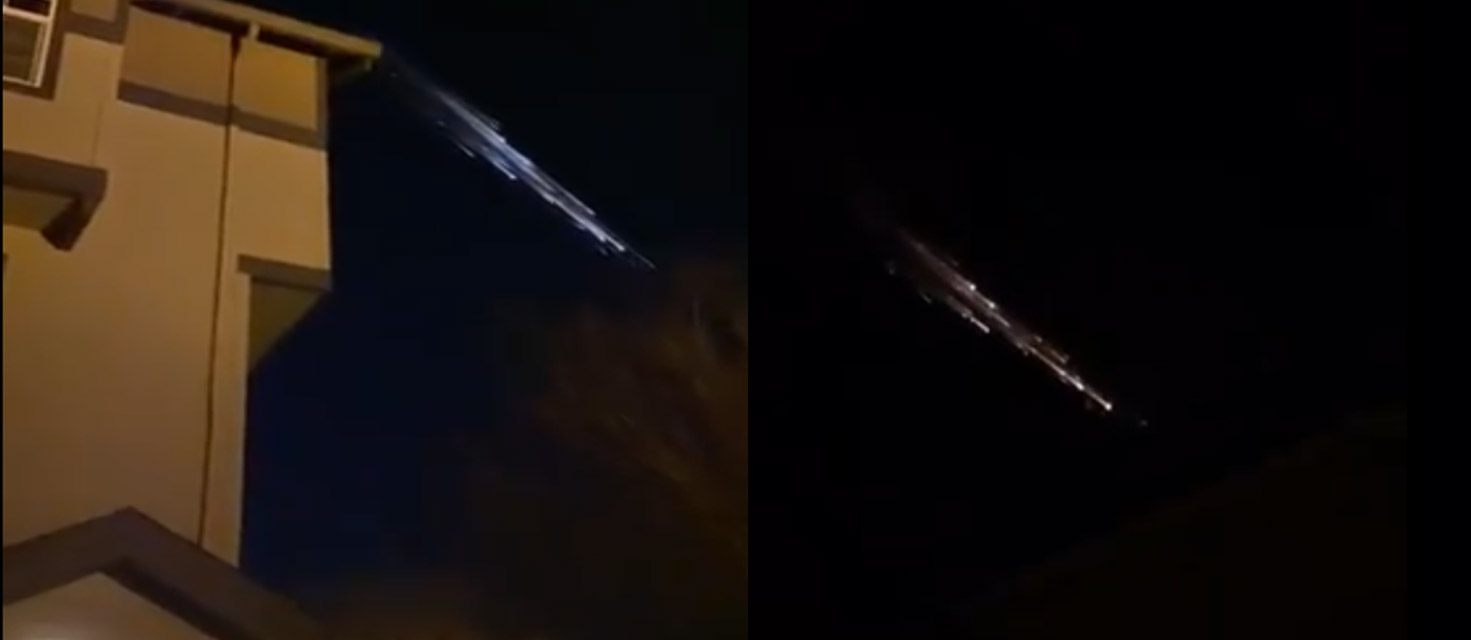
The AMS received over a lot of reports of a bright fiery object traveling over Oregon on Thursday, 25 March 2021 around 9pm PDT. It was the remaining of a Falcon 9 second stage from the "Starlink Launch 4" mission launched in February 2020.